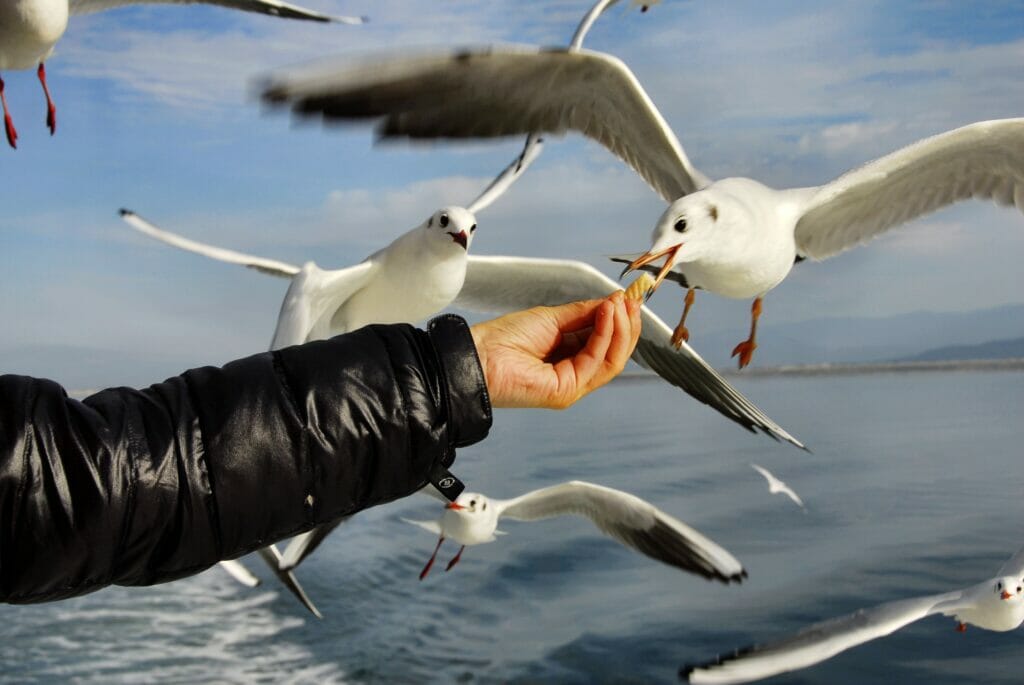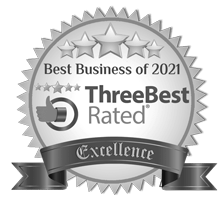Table of Contents
Seagulls are a regular annoyance for Brits at the seaside; maybe they’ve stolen your fish and chips or chased after you for your ice cream, but how far does it go? Are seagulls dangerous?
We’ve seen outrageous stories in the news over the past few years. In 2019 a Chihuahua was whisked away by a seagull in Devon, and this was followed by a 77-year-old man in Great Yarmouth who was attacked three times. But are these just exaggerated headlines used to cause panic, or are seagulls really a threat to us?
Let’s take a look at the dangers carried by seagulls and what you can do to protect yourself and your home.
What are Seagulls?
This may seem like a silly question at first; surely everyone knows exactly what a seagull is, right? However, you might be surprised to learn that there is no bird species named ‘seagull’!
The bird we may commonly refer to as seagulls are actually just called gulls – and there’s more than one kind.
Types of Seagulls
- Herring Gull – The Herring Gull is the real name for what most people would call a seagull. They are the most common type of gull here in the UK, and they have the appearance of a stereotypical seagull, with a large body, white head and grey flecks on their upper body.
- Lesser Black-Backed Gull – A slightly smaller bird than the Herring Gull, the Lesser Black-Backed Gull is also a common feature along our coastlines. They are easy to spot thanks to their dark grey upper bodies, black wingtips and bright yellow legs.
- Great Black-Backed Gull – This gull is much larger than its namesake and is the world’s largest type of gull. Due to its larger size, the Great Black-Backed Gull has an extremely large head, making its eyes appear tiny in comparison. They have darker upper bodies than the Lesser Black-Backed Gulls and have light pink legs as opposed to bright yellow.
- Common Gull – The common gull is the smallest of the gull family. They look like a smaller, baby version of the Herring Gull, with pale grey flecks, yellow legs and a narrow yellow bill.

Although it technically isn’t correct, we will continue to use the colloquial term ‘seagulls’ throughout this article.
Are Seagulls Dangerous to Humans?
Now we know a little more about what type of gulls we have to deal with, we can explore the dangers they bring. Most bird species are afraid of humans; however, thanks to years of interaction with us, it appears that gulls have lost this fear.
Gulls are surprisingly intelligent creatures, especially for their size, and they have figured out that we are an easy food source. Unfortunately, despite being warned against it, many people enjoy feeding seagulls along the coast, worsening the problem. As well as this, litter and food waste are often left on our beaches, providing another easy food source.
Gulls have become accustomed to easy access to food and viewing us as food sources. This, combined with their lack of fear of humans, has resulted in a dangerous mix. Seagulls frequently steal food directly out of the palm of our hands, diving down for chips and other seaside treats.

Due to their size and wingspan of around 140cm, they often make contact with humans during their attempts to steal food. Contact with their wings, claws and bills have been known to cause injuries, including broken bones, fractures, cuts and bruises.
Seagulls have also been known to attack humans when they get too close to their nests. They are incredibly protective creatures, especially during bird nesting season, and anyone who gets too close can expect a rather violent retaliation and possible injuries.
Do Seagulls Carry Diseases?
Seagulls spend most of their time digging through rubbish along the coast and at waste disposal sites, so they’re bound to pick up some bacteria and diseases along the way.
Seagulls are responsible for spreading many of the same diseases that pigeons carry, including Psittacosis, Histoplasmosis, Cryptococcosis and E. coli.
These diseases are spread via bacteria and fungus in their droppings. Seagulls will leave their droppings wherever they go, on the cliffs, on the sand, on pavements, window ledges and roofs. These droppings will then solidify over time and turn to dust. When this happens, contaminated particles are kicked or blown into the air and inhaled by passersby.
Are Seagulls a Danger to Pets?
Unfortunately, yes! There have been numerous reports of small dogs being picked up by aggressive seagulls, never to be seen again. Poor Gizmo was snatched from his garden by seagulls back in 2019, and the cases seem to be increasing.
Gulls are more than capable of carrying the weight of small dogs. In fact, they regularly capture and feed off of small animals like rabbits. If you have a tiny dog or small animals in your garden, then it’s well worth thinking about seagull control or proofing methods to keep them safe – particularly if you live near the coast.
How to Protect yourself from Seagulls
If you’re unfortunate enough to find yourself in the midst of a seagull attack, you can employ a couple of tactics to ensure you come away unscathed.
One of the main reasons a seagull will attack is because they believe you’re a threat to their chicks. If you’re too close to their nest, seagulls will first begin to warn you with their calls, and you should move away. Failure to acknowledge the calls and move away may result in them swooping or diving to attack. If this occurs, you should raise your arms to protect your head and aim to get away from the seagulls as quickly as possible. Although you will most likely be panicking, try to stay calm and avoid agitating the seagulls further.
If you’re looking to enjoy your fish and chips next to the sea, we recommend finding an area away from the seagulls if possible. Find a shelter or secluded area away from the crowds to enjoy your food in peace. Also, make sure to keep your food close to you, don’t wander around with your ice cream held out in front of you as you’re asking for trouble!
Another way to protect yourself from seagulls is to ensure you clear away and dispose of all rubbish properly. Don’t leave your rubbish to pile up and attract seagulls to your location. Plus it’s a great way to keep our coastal areas tidy.
Deterring Seagulls from your Property
If it’s your home or business suffering from seagull problems, several bird control and proofing methods are available. However, before we continue, it’s important to note that seagulls are protected birds. All gull species are protected under the Wildlife and Countryside Act 1981, making it illegal to intentionally injure or kill any seagull.
Control methods like seagull spikes, bird netting, and bird scarers are effective methods to deter seagulls from your property – for more information on these methods, visit our article on How to Get Rid of Seagulls. As well as the dangers we have already discussed, seagulls can also cause damage to your property. Seagull droppings are highly acidic and can cause extensive structural damage to your home over time.
If you’ve already tried seagull proofing methods and you’re still having trouble, then it’s time to get the professionals involved. At Integrum, we offer expert seagull control services and bird dropping removals to protect your home and keep your family safe. As well as this, we also offer fully-licensed drone surveys that allow for a thorough investigation of the problem at hand
DIY methods are rarely effective, and it’s just not worth risking a fine or any criminal conviction. Instead, you should leave it to the seagull control experts who are equipped with professional equipment and years of experience.
We offer our seagull control services across London and the South East, keeping your homes and businesses seagull free for good.




